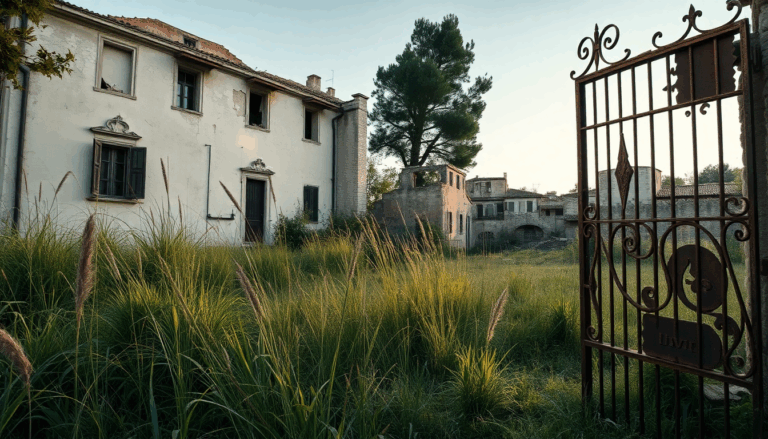Italy is facing a growing crisis with a troubling rise in abandoned properties, a trend that has dramatically escalated in recent years. Did you know that there has been a staggering 126% increase in dilapidated buildings since 2011? This surge coincided with the introduction of the Unique Municipal Tax
(IMU), raising concerns not only about housing shortages but also about broader economic and social ramifications. With over 629,000 properties currently classified as collabenti, it’s crucial to examine what drives property owners to neglect their assets. Let’s explore the root causes of this alarming trend and its impact on the real estate market.
Emerging Trends in Property Abandonment
The increasing number of unused properties, known as collabenti
and categorized as “F2” in the land registry, highlights a persistent issue across both rural and urban areas in Italy. Despite a growing interest in urban regeneration, many property owners are hesitant to invest in renovations. One major hurdle? The financial burden imposed by the IMU. While primary residences have been exempt from this tax since 2013, owners of second homes and unused properties continue to face significant costs. This tax creates
a substantial barrier for those considering renovations.
Moreover, the exemptions and tax reductions that have been introduced have not been sufficient to motivate property owners to breathe new life into their buildings. This is especially true given the recent cuts to tax incentives for renovation projects. As we think about potential alternatives to revitalize these abandoned spaces, it’s essential to grasp the broader socio-economic landscape influencing these decisions.
Regional Disparities and Alarming Statistics
Recent data reveals that Frosinone is at the forefront of this issue, with over 32,000 abandoned units. Cosenza and Messina are not far behind, both showing double-digit growth rates in property neglect. This issue is particularly alarming in provincial capitals, where the number of dilapidated buildings has reached critical levels; over 45,000 structures are reported as derelict, many of which are illegally occupied or used for illicit activities. This raises an important question: how can stakeholders reverse this troubling trend?
Southern Italian regions are experiencing the steepest increases in abandoned properties, with Palermo alone housing nearly 3,800 such units, followed closely by Reggio Calabria and Rome. In contrast, Milan, despite a slight uptick, has a relatively low number of abandoned units at about 361. This disparity prompts a closer look at how local policies might influence the recovery and enhancement of these properties.
Financial Implications and the Path Forward
The current fiscal landscape shows that over 25 million property owners are subject to IMU payments, with deadlines looming on June 16 and December 16. The average cost for a second home in a provincial capital hovers around €977, though this varies widely across Italian cities. For instance, Rome carries the highest tax burden, followed by Milan and Venice.
This financial strain could compel more property owners to part ways with buildings that would otherwise need renovations. The combination of high tax obligations and insufficient incentives could worsen the trend of urban and social decay in the years to come. Clearly, strategic interventions from institutions are vital to tackling this crisis. So, what viable solutions could be implemented to foster the recovery of these properties and revitalize urban landscapes?
Conclusion: Strategies for Revitalization
To effectively combat the rising tide of abandoned properties, it’s essential for policymakers to explore innovative approaches that not only reduce the tax burden on property owners but also offer substantial incentives for renovation and sustainable development. This might include enhanced tax breaks for renovation projects, grants for urban renewal initiatives, and community-driven efforts to repurpose abandoned buildings into functional spaces. By addressing the root causes of this abandonment crisis, Italy can take significant steps toward revitalizing urban areas and improving the overall quality of life for its residents.

